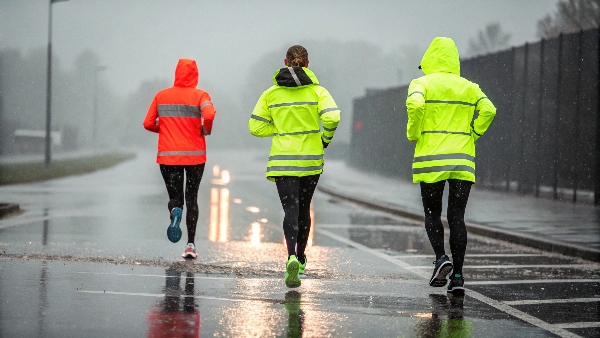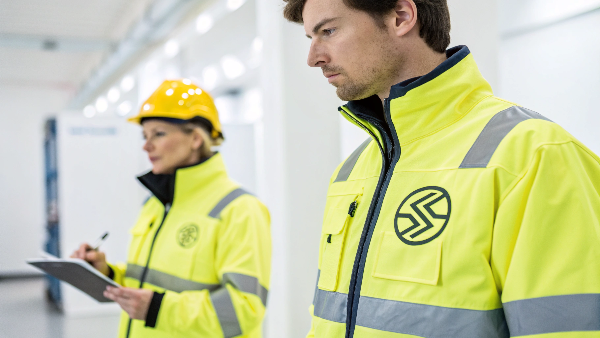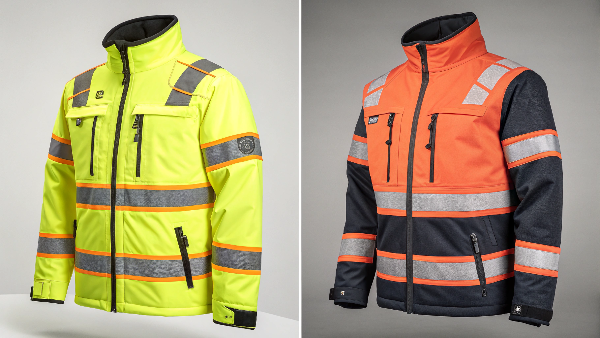Working in tough conditions demands the right gear. You need protection, but also visibility. Safety jackets are a key part of this, but are they enough?
Yes, safety jackets significantly enhance visibility, especially in low-light or high-traffic areas. They use bright colors and reflective tapes to make workers stand out. This greatly reduces the risk of accidents and protects lives by preventing workers from being overlooked by vehicle operators or colleagues.
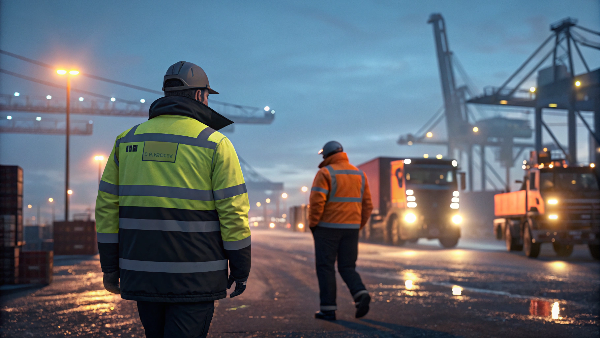
Choosing the right safety jacket can feel complicated. There are so many options, standards, and work conditions to think about. We get it. As manufacturers since 2007, we've helped countless businesses like yours navigate these choices. We want to share what we've learned to help you keep your team safe and seen. Let's explore what makes these jackets so vital and how to pick the best ones for your needs.
What is the purpose of a safety jacket?
Wondering why safety jacket1s are so essential? You need gear that works. A safety jacket's main job is to keep you seen, preventing accidents.
The primary purpose of a safety jacket is to make the wearer highly visible to others, especially vehicle operators and equipment users. This is crucial in environments with moving traffic, low light, or complex backgrounds, helping to prevent accidents and protect lives.
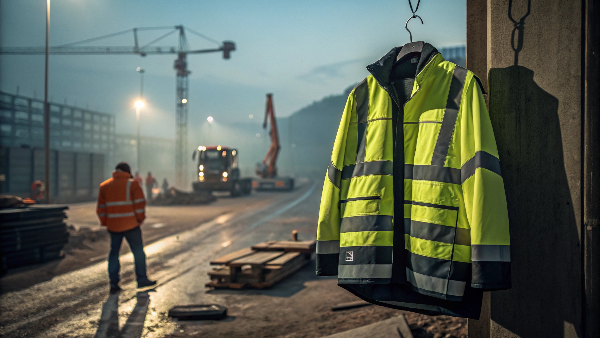
At Vissafety, we see the direct impact of well-designed safety jackets every day. Their main job is, without a doubt, to boost visibility2. Think about a worker on a busy roadside at dusk, or someone in a sprawling warehouse with forklifts zipping around. Without a safety jacket, they can easily blend into the background. Our jackets use very bright, fluorescent colors that stand out in daylight. They also have special retroreflective tapes3. These tapes bounce light directly back to its source, like car headlights. This makes the wearer almost glow in the dark when a light shines on them.
But it's not just about being seen. Safety jackets often provide other types of protection. For example, many of our designs offer warmth, which is critical for people working outside in cold weather. We make sure our winter safety jackets have good insulation without being too bulky. They also offer some protection against wind and rain. We test the fabrics for durability too. This means they can handle the wear and tear of a tough job. So, while the number one goal is to make you stand out, a good safety jacket does more to keep you safe and comfortable.
Which class of safety vests has the most visibility and is safer for the user?
Concerned about getting the highest level of protection? Different classes offer different visibility. Knowing which one is best for your situation is key to safety.
Class 3 safety vests4 and jackets offer the most visibility and are considered the safest for users in high-risk environments. They have the largest amount of fluorescent background material and reflective tape, covering more of the body.
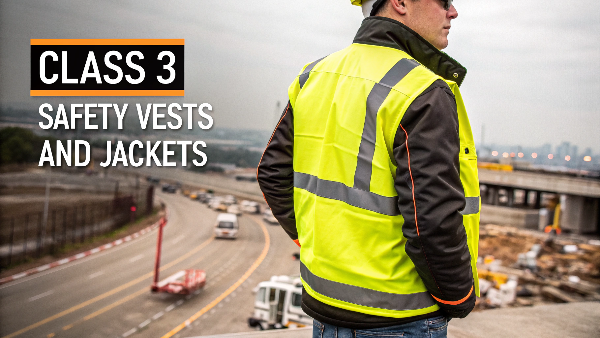
When we talk about safety garment classes, we're usually referring to standards like ANSI/ISEA 1075 (common in the US) or EN ISO 20471 (common in Europe). These standards define three main classes based on the amount of high-visibility material6 and reflective tape used. Class 3 garments provide the highest level of visibility. This means they have the most fluorescent background material and the most retroreflective tape compared to Class 1 or Class 2 garments. Class 3 garments are also designed to offer 360-degree visibility, often including material on the sleeves and sometimes trousers.
This makes Class 3 garments the safest option for workers in the most dangerous conditions. Think about people working on highways where traffic speeds are high, or in areas with very complex visual backgrounds, or during bad weather like rain or fog. In these situations, being seen from the furthest possible distance, and from all angles, is absolutely critical. As a manufacturer, we produce garments for all classes. However, for clients like Danny Cheng, whose customers work in high-risk sectors like construction and road maintenance in North America, we almost always recommend Class 3. We once had a client in the logistics sector who upgraded their night-shift yard crew from Class 2 to Class 3 jackets. They reported a noticeable decrease in near-miss incidents with shunting trucks. It's a clear example of how more visibility directly translates to more safety. Our internal testing for Class 3 garments is very strict to ensure they meet or exceed the minimum area requirements for both types of materials.
| Feature | Class 1 Garments | Class 2 Garments | Class 3 Garments |
|---|---|---|---|
| Primary Use | Off-road, low traffic/speed | Roadways < 50 mph, moderate risk | Roadways > 50 mph, high risk, poor sight |
| Background Material | Smallest amount required | Medium amount required | Largest amount required |
| Reflective Tape | Smallest amount required | Medium amount required | Largest amount required, often on sleeves |
| Typical Scenarios | Parking lots, warehouses | Local roads, construction sites | Highways, emergency response |
When must a high visibility jacket be worn?
Unsure about when rules require high visibility? It's not just a good idea. Often, it's a mandatory safety measure to prevent serious workplace accidents.
A high visibility jacket must be worn when working in low light conditions, near moving vehicles or equipment, or where workers need to be easily distinguishable from a complex background. Regulations often mandate their use in specific industries.
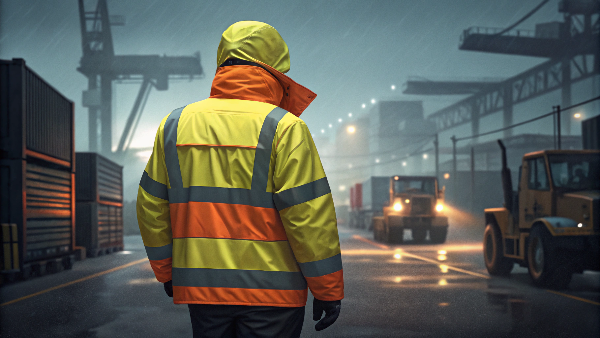
Knowing exactly when to wear a high visibility jacket is crucial for safety and compliance. Generally, regulations like those from OSHA in the United States (often referencing the ANSI/ISEA 107 standard) or similar bodies in other countries, require high visibility garments in many situations. The core idea is risk assessment. If there's a risk that a worker might not be seen by vehicle operators or other machinery operators, then high visibility clothing is necessary.
This definitely includes working at night, or during dawn and dusk when light levels are low. It also applies to daytime work if the environment is visually complex, making it hard for workers to stand out. Think about construction sites with lots of equipment and materials, or busy roadways. People working on or near roads, like highway maintenance crews, emergency responders, and utility workers, almost always need them. Airport ground crews, railway workers, and even people directing traffic in parking lots often fall under these requirements. At Vissafety, we often advise clients that if there's any doubt, it's best to wear the high visibility gear. We've heard many stories from our customers, like Danny Cheng, about how a simple vest or jacket prevented a potential accident. Many companies, especially larger ones in industries like construction, logistics, and oil & gas, have their own strict internal policies that go beyond the basic legal minimums, requiring hi-vis wear for almost all on-site personnel. We support this proactive approach to safety.
What do the different color safety jackets mean?
Seeing various colors of safety gear? You might wonder if color choice matters. While some colors are standard for high visibility, others might be for different reasons.
Standard high visibility jacket colors like fluorescent yellow-green and orange-red are chosen for their conspicuity against most backgrounds. Other colors might be used by companies for role identification but may not meet official hi-vis standards.
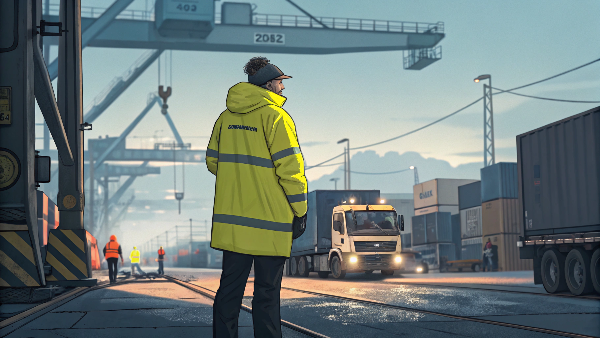
The most common colors you see in high visibility safety jackets are fluorescent yellow-green and fluorescent orange-red. Sometimes you'll also see fluorescent red. These specific colors are chosen because they are the brightest and most easily seen against a wide range of backgrounds, especially during daylight hours. Our eyes are very sensitive to these parts of the color spectrum. Standards like ANSI/ISEA 107 and EN ISO 20471 actually specify these colors for compliance.
Sometimes, companies use other colors for safety vests or jackets, like blue, green, or even black, often with reflective tape. These are typically used for identification purposes – for example, to distinguish supervisors from general workers, or visitors from employees. While these can be helpful for organization on a site, it's very important to understand that these other colors usually do not meet the official high visibility standards if the garment is primarily that non-fluorescent color. They simply don't offer the same level of conspicuity as the approved fluorescent shades, especially in daylight or poor weather. At Vissafety, when a client asks for custom colors, we always discuss the intended use. If the workers will be in environments requiring certified high visibility protection, we strongly advise sticking to compliant fluorescent yellow-green or orange-red for the main body of the garment. We can then use other colors for trim, logos, or smaller panels for branding or identification, ensuring safety isn't compromised. We test all our dyes to make sure the fluorescent colors maintain their brightness and visibility ratings.
| Color | Typical Use/Meaning | Hi-Vis Compliance (ANSI/EN) |
|---|---|---|
| Fluorescent Yellow-Green | Standard hi-vis, good against many backgrounds | Yes |
| Fluorescent Orange-Red | Standard hi-vis, good against foliage, snow | Yes |
| Fluorescent Red | Less common, but also a compliant hi-vis color | Yes |
| Blue, Green, Black, etc. | Often for role/team identification, visitor designation | No (if primary color) |
| Pink | Sometimes used, can be compliant if fluorescent | Potentially, if certified |
What is the purpose of a high visibility vest?
Considering a vest instead of a full jacket? Vests offer similar visibility benefits. They are often a lighter, cooler option for specific needs and conditions.
The purpose of a high visibility vest7 is identical to a jacket: to make the wearer highly conspicuous. Vests are often preferred in warmer weather or for tasks requiring more freedom of movement, offering a lighter, cost-effective visibility solution8.

A high visibility vest serves the exact same core purpose as a high visibility jacket: to make the person wearing it stand out and be easily seen. The goal is to prevent accidents by ensuring others, especially those operating vehicles or machinery, can spot the worker quickly, even in difficult conditions. Vests achieve this using the same principles: bright, fluorescent fabric for daytime visibility and retroreflective stripes for nighttime or low-light visibility when illuminated by a light source.
The main differences between a vest and a jacket are usually about comfort, coverage, and specific job requirements. Vests are generally lighter and less restrictive than jackets. This makes them a popular choice in warmer climates or for indoor work where added warmth isn't needed. They are also often worn over regular clothing or even over a non-hi-vis jacket. Because they use less material, vests can sometimes be a more cost-effective option, especially when outfitting a large workforce. However, it's important to remember that high visibility vests also come in different classes (Class 1, 2, or sometimes even Class 3, though Class 3 vests might have specific design requirements to meet material minimums). As a manufacturer, we produce millions of high visibility vests each year. We ensure they meet the same strict quality and visibility standards as our jackets, class for class. For us, whether it's a vest or a jacket, the commitment to enhancing worker safety through superior visibility remains paramount.
What are the OSHA rules for high visibility?
Navigating OSHA rules can seem complex. You want to ensure compliance. OSHA emphasizes employer responsibility for worker safety, including visibility in hazardous areas.
OSHA requires employers to protect workers from struck-by hazards. While not having its own detailed hi-vis standard, OSHA references ANSI/ISEA 107 as a recognized industry consensus standard for high visibility safety apparel (HVSA).
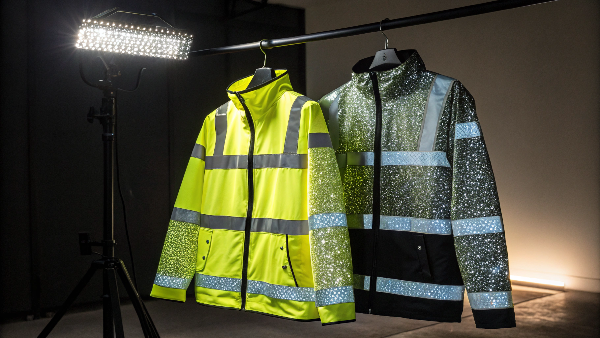
Understanding OSHA's rules for high visibility clothing is important for employers in the U.S. OSHA (Occupational Safety and Health Administration) itself doesn't have one single, highly detailed regulation that specifies exactly what kind of high visibility clothing to wear in every situation, unlike the specific ANSI/ISEA 107 standard. However, OSHA's requirements are rooted in its "General Duty Clause." This clause states that employers must provide a workplace free from recognized hazards that are causing or are likely to cause death or serious physical harm. Being struck by vehicles or equipment is definitely one of those hazards.
OSHA does specifically address high visibility for workers in highway and road construction work zones through regulation 23 CFR Part 634. This rule mandates that workers exposed to traffic or construction equipment within a federal-aid highway right-of-way must wear high-visibility safety apparel that meets ANSI/ISEA 107 Class 2 or Class 3 requirements. For other industries, OSHA often refers to ANSI/ISEA 107 as an industry consensus standard that demonstrates an employer's effort to protect workers. So, if there's a risk of low visibility, employers are expected to conduct a hazard assessment and provide appropriate Personal Protective Equipment (PPE), which includes high visibility clothing. As a manufacturer working with clients like Danny Cheng who supply to the US market, we make sure our products are designed and tested to meet ANSI/ISEA 107. This helps our clients ensure they are providing compliant and effective safety gear for their customers, aligning with OSHA's expectations for worker safety.
What does high visibility clothing protect you from?
Curious about the full scope of protection? High visibility clothing primarily guards against one major risk. It helps prevent accidents by making sure you are seen.
High visibility clothing primarily protects you from being struck by vehicles or moving equipment because it makes you more visible. Depending on the garment, it may offer secondary protection from weather or minor abrasions.
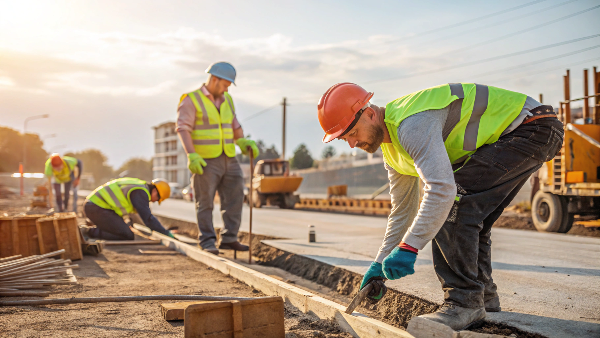
The main thing high visibility clothing protects you from is the danger of not being seen. This is incredibly important in any environment where there are moving vehicles or machinery. Think about road construction, warehouses with forklifts, or emergency scenes. By wearing bright fluorescent colors and reflective tapes, you stand out against the background. This gives drivers and equipment operators a much better chance to see you, especially in low light, bad weather, or from a distance. The primary goal is to prevent "struck-by" accidents, which can be very serious or even fatal.
Beyond this core function, some types of high visibility clothing can offer other protections. For example, our Vissafety winter safety jackets are designed to provide warmth and protection from cold, wind, and sometimes rain, while still meeting visibility standards. Some heavier-duty garments might offer a degree of protection against minor cuts, scrapes, or dirt. However, it's crucial to understand what standard high visibility clothing does not protect you from. It generally doesn't protect against severe impacts, chemical splashes (unless it's specifically designed as chemical-resistant hi-vis wear), or fire (unless it's specifically rated as flame-resistant hi-vis wear, often called FR hi-vis). We always emphasize to our clients that high visibility clothing is one vital piece of PPE, but it must be chosen based on a full risk assessment of the specific job and environment.
What are the 3 classes of high visibility clothing?
Heard about different classes of hi-vis gear? Understanding these classes is vital. Each class offers a specific level of visibility for different risk environments.
The 3 classes of high visibility clothing (Class 1, Class 2, Class 3) are defined by the minimum amount of fluorescent background material and retroreflective tape required, dictating the garment's overall visibility level for various risk scenarios.
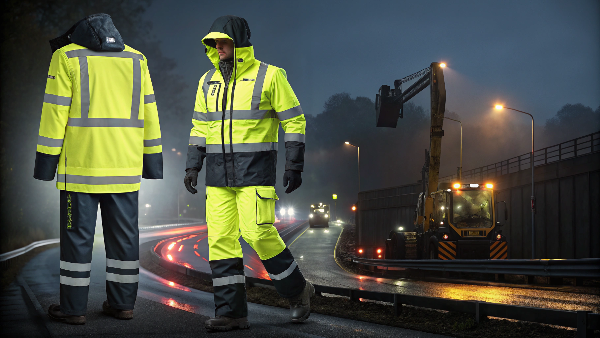
Standards like ANSI/ISEA 107 in the USA and EN ISO 20471 in Europe define three main classes of high visibility clothing. These classes help employers choose the right level of protection based on the risks workers face. The main difference between the classes is the minimum amount of high-visibility materials required.
Class 1: This class provides the lowest recognized level of visibility. Garments in this class have the smallest amount of fluorescent background material and retroreflective tape. They are intended for workers in off-road environments or areas where traffic speeds are 25 mph (about 40 km/h) or less, and where workers are well separated from traffic. Examples include parking attendants or workers in some warehouse situations.
Class 2: This class provides a higher level of visibility than Class 1. These garments have more background material and more reflective tape. They are needed for workers who are on or near roadways where traffic speeds are between 25-50 mph (40-80 km/h), or in environments with greater risks than those requiring Class 1. Examples include roadway construction workers (not in the highest speed zones), utility workers, survey crews, and school crossing guards.
Class 3: This class provides the highest level of visibility. Garments require the largest amount of both fluorescent background material and retroreflective tape, often including material on the sleeves and trousers to ensure 360-degree visibility. Class 3 is for workers in the highest-risk environments, such as highway zones where traffic exceeds 50 mph (80 km/h), complex construction sites, or when a worker must be conspicuous through a full range of body motions at a minimum of 1,280 feet (390 m). Emergency responders often wear Class 3.
At Vissafety, we design and manufacture garments to meet all three classes. Our triple inspection process ensures that every batch meets the precise material area requirements for its designated class. This is crucial for clients like Danny Cheng, who need to provide their customers with compliant and reliable safety apparel.
| Feature | Class 1 | Class 2 | Class 3 |
|---|---|---|---|
| Intended Risk Level | Low | Medium | High |
| Min. Background Area | e.g., 0.14 m² (ANSI) | e.g., 0.50 m² (ANSI) | e.g., 0.80 m² (ANSI) |
| Min. Reflective Tape | e.g., 0.10 m² (ANSI) | e.g., 0.13 m² (ANSI) | e.g., 0.20 m² (ANSI) |
| Typical Garments | Vests | Vests, T-shirts | Jackets with sleeves, Trousers, Coveralls |
| Example Users | Parking lot attendants | Road construction (lower speeds) | Highway workers, emergency responders |
Conclusion
Safety jackets are essential for worker visibility and protection. Choosing the right class and features ensures optimal safety in various work environments, ultimately saving lives.
-
Explore this link to understand the various benefits of safety jackets, including visibility and protection in hazardous environments. ↩
-
Learn why visibility is crucial in safety gear and how it can prevent accidents in various work environments. ↩
-
Discover how retroreflective tapes work to improve safety jackets' effectiveness in low-light conditions, ensuring maximum visibility. ↩
-
Explore the advantages of Class 3 safety vests for maximum visibility and safety in high-risk environments. ↩
-
Learn about the ANSI/ISEA 107 standard to understand safety vest classifications and their importance in workplace safety. ↩
-
Discover the types of high-visibility materials used in safety vests and their role in enhancing worker safety. ↩
-
Explore the benefits of high visibility vests to understand how they enhance safety and visibility in various work environments. ↩
-
Learn about various visibility solutions that can improve safety for workers in different conditions and environments. ↩

